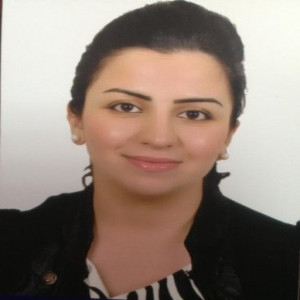Published Journal Articles
2023
Experimentation on enhancement of solar still performance
2023-07
International Journal of Renewable Energy Development (Issue : 4) (Volume : 12)
This work presents new results from controlled experiments using well-designed and constructed single-inclination solar stills. The aim of
these experiments is to explore methods for enhancing still performance by studying the individual effects of three types of methods. Specifically, the experiments investigate the actual effects of still basin water depth, the use of a sensible heat storage medium, and the treatment of the inner glass surface with waxy substances. The main distinction in this work is the use of solar stills that can achieve thermal efficiencies in excess of 40% under favourable weather conditions without any modification. This high efficiency level allows for meaningful analysis of the impact of modifications on still performance. The results indicate that still yield, productivity, and thermal efficiency decrease significantly when the water depth in the basin exceeds 6 cm. additionally, introducing black gravel in excess of a 2% gravel to water mass ratio in the still basin does not produce a significant change in still thermal efficiency. Treatment of the still inner glass surface with two types of waxy materials resulted in large drop in still performance.
Empirical modeling of optimum tilt angle for flat solar collectors and PV panels
2023-06
Environmental Science and Pollution Research (Volume : 30)
A new model has been developed to determine the optimal tilt angle for PV panels and solar collectors on a yearly, seasonal, and monthly basis. The model estimates the diffusion component of solar radiation using Orgill and Holland’s model, which relates the diffusion fraction of solar radiation to the sky clearness index. Empirical data on the clearness index is used to derive the relationship between the diffusion and direct components of solar radiation at any global latitude on any given day of the year. By maximizing the total amount of diffused and direct radiation, the optimal tilt angle for each month, season, and year is determined relative to the latitude angle. The model is programmed in MATLAB and is freely available for download from the MATLAB file exchange website. The model shows that small deviations from the optimal inclination angle have only a minor effect on overall system yield. The monthly optimal tilt angles predicted by the model are consistent with experimental data and other published model predictions for various locations around the globe. Importantly, unlike some other models, the present model does not predict negative optimal inclination angles for small northern hemisphere latitudes or vice versa.
Effects of varying weather parameters on solar still performance
2023-06
Desalination and Water Treatment (Volume : 298)
This study presents an empirical model based on experimental results of a simple single-slope conventional solar still’s daily yield of distilled water, productivity, and thermal efficiency. The model assumes that the still efficiency can be factored as a function of three independent weather parameters beside solar radiation: atmospheric temperature, wind speed, and dew point. The effect of the latter parameter has seldom been studied. Correlation analysis showed that relative humidity and atmospheric pressure are dependent on those three, and their effects on still performance are only signatures of the three independent weather variables. Hence, they are not included in the modeling.
The model predicts that temperature, dew point temperature, and wind speed have a percentage effect of 73.5%, 12.2%, and 14.3%, respectively, on still efficiency. The experiment was conducted over a seven-week period from last week in August to end of second week in October 2022 in Zakho city, Kurdistan, Iraq. This period was characterized by variable weather parameters such as solar radiation, wind speed, atmospheric temperature, atmospheric pressure, dew point, and relative humidity. These variable weather conditions resulted in a wide range of variable daily yields and thermal efficiency values, ranging from 1,200–4,250 mL/d and 26%–45%, respectively. The analysis suggests that the average daily still thermal efficiency is linearly proportional to the incoming total daily solar radiation, with daily deviations from this linear average caused by other variable weather parameters.
2013
" Evidence of Global Warming from Zakho Precipitation Data"
2013-12
Journal of University of Zakho, A - Science, Volume 1, Number 1, December 2013, with a rank “Valuabe (Volume : 1)
Analysis of available precipitations data for Zakho area supports the argument that global warming has affected this region. Results shows that monthly and yearly rain fall have been decreasing systematically since the thirties of the last century until now. Based on linear correlation model, some future estimations of the reduction in precipitation as related to the global atmospheric carbon dioxide concentrations are made.
Back
